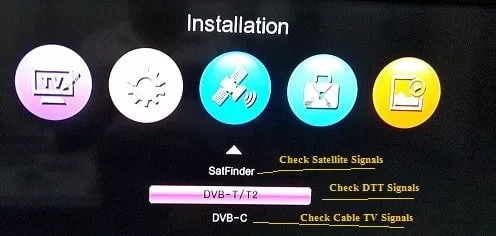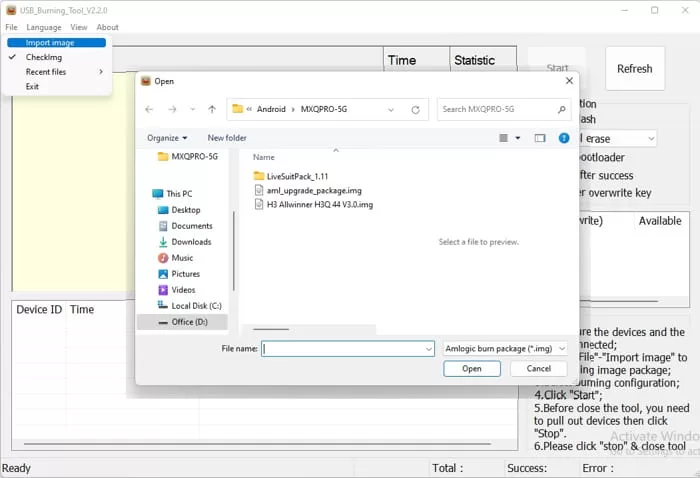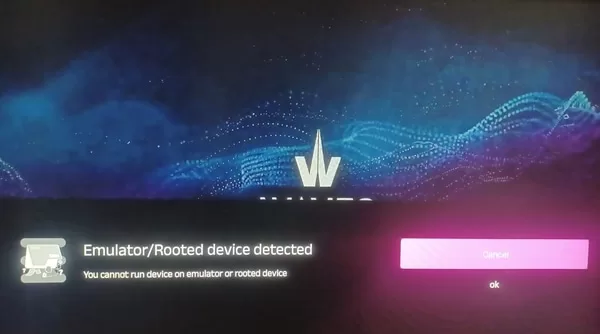You must have seen the DVB logo on many video players from which we watch TV channels. Today we will share some interesting information related to DVB. You must know this information. With this, you will also know through which medium you can get live TV channels.So let’s quickly understand this information in short, how DVB-T, DVB-S, DVB-C, DVB-I, and DVB-H differ from each other. What’s the difference?
Facts –
FAQs –
Table of Contents
Satellite TV Broadcasting –
DVB-S –
DVB-S means digital video broadcasting by Satellite. DVB-S signals can be received directly from the satellite, as you can understand by the abbreviation for DVB-S ( Digital Video Broadcasting-Satellite). DVB-S broadcasting uses QPSK, 8PSK, or 16-QAM. Which used MPEG-2 video compression, which is also known as MPEG-TS (MPEG-2 Transport Stream).DVB-S is still in use in India. India’s only free satellite TV service Doordarshan DTH is also currently using DVB-S. Apart from this, only a few private TV channels are left in DVB-S on C-Band. Most have updated themselves to the new standardDVB-S2 –
DVB-S means digital video broadcasting by Satellite. The DVB-S2 is the next generation of satellite broadcasting. DVB-S2 uses QPSK, 8-PSK, 16APSK, or 32APSK, Which used MPEG-4 AVC (H.264) video compresstion.And as we mentioned above, most of the TV channels have converted themselves to DVB-S2. For this, cable operators and individual viewers have also upgraded their set-top boxes to MPEG4 or DVB-S2. Here the difference between DVB-S and DVB-S2 can be understood in such a way that in the same brand width as one channel of DVB-S runs, two channels of DVB-S2 run in the same bandwidth. And the video quality and audio quality are also better.DVB-S2X –
DVB-S means digital video broadcasting by Satellite. Although now a new generation or 3rd generation is also available which is called DVB-S2X. It is the latest new version of digital video broadcasting (DVB). Here “X” means EXTENDED. Efficiency gains of up to 51% can be achieved with DVB-S2X. Because It supports higher-order modulation schemes like 64/128/256APSK with smaller roll-off factors. This technology will increase the number of HDTV channels on DTH services and other satellite TV platforms.Terrestrial Television Broadcasting –
DVB-T –
DVB-T means digital video broadcasting by terrestrial. DVB-T can not receive signals from satellite, these signals can be received from the local nearest TV Tower which works on radio frequencies. as you can understand by the abbreviation for DVB-T ( Digital Video Broadcasting-Terrestrial ). DVB-T (VHF/UHF) uses 16QAM or 64QAM (or QPSK).DVB-T2 –
DVB-T means digital video broadcasting by terrestrial. DVB-T2 is the next generation of terrestrial broadcasting. Currently, Prasar Bharati has adopted this technology for the broadcast of the Doordarshan channel, DD News, DD Kisan, FM channels, and other regional TV channels. This latest version of terrestrial video broadcasting DVB-T2 airing TV channels digitally. Now it is possible to broadcast multiple channels in a single frequency using terrestrial TV towers. Viewers now get a clear picture with digital sound.Cable TV Broadcasting –
DVB-C –
DVB-C means digital video broadcasting by Cable TV.DVB-C transmits MPEG-2 or MPEG-4 compressed digital audio/digital video streams using QAM modulation. DVB-C first debuted in an analog mode called traditional cable TV, disc, or dish cable.However, in India now this technology has become obsolete and now it is prohibited to use it. In the era of Digitization in India, Cable TV has also become digital, whose new form is below i.e. DVB-C2.DVB-C (VLF/VHF/UHF) uses QAM, 16QAM, 32QAM, 64QAM, 128QAM or 256QAM.DVB-C2 –
DVB-C means digital video broadcasting by Cable TV. The DVB-C2 is to increase transmission capacity by more than 30 % while maintaining the same channel bandwidth.DVB-C2 is the next-generation digital Cable TV transmission that has been adopted by Mr. Narendra Modi’s Government during the digitization of India.In traditional Cable TV (DVB-C), Cable TV operators were able to provide only live TV channels including some private TV channels. But after the implementation of new technology in cable TV, now cable operators are able to provide interactive services like Games, Temple Darshan, Live TV recording, OTT services, etc.Mobile TV Broadcasting –
DVB-H –
DVB-H means digital video broadcasting by handheld (Smartphone, tablet, laptop, etc). DVB-H (Digital Video Broadcasting – Handheld) is the Television broadcasting technology direct to mobile TV formats. Although DVB-H failed its expectations, the reason behind it is DVB-T2 and Internet Streaming.Internet TV (IPTV) Broadcasting –
DVB-I –
The adoption of DVB-I means viewers can watch television content using any type of broadband network, fiber Internet connection, 4G or 5G network, and beyond.DVB-I enables IPTV operators to easily manage and integrate OTT networks or channels. DVB-I metadata can be used to create service catalogs for customers including any combination of OTT content that can be converted to EPG and improved UI.Users can watch their favorite content on any device from smartphones, tablets, and laptops to TV sets, set-top boxes, and OTT streaming sticks.Facts –
- A DVB-S satellite TV box ie set-top box cannot receive DVB-T.
- A DVB-T Digital TV box cannot receive DVB-C.
- A DVB-C Cable TV box ie set-top box cannot receive DVB-I.
- A DVB-I Internet TV box ie OTT box cannot receive DVB-S.
FAQs –
What is the difference between DVB-T and DVB-T2?
DVB-T and DVB-T2 are both technologies used in Terrestrial broadcasting, where DVB-T is an older technique and DVB-T2 is the latest technology for terrestrial broadcasting.What is the difference between DVB-C and DVB-C2?
DVB-C and DVB-C2 technologies are used in Cable TV broadcasting by your local cable operators.What is the difference between DVB-S, DVB-S2, and DVB-S2X?
DVB-S, DVB-S2, and DVB-S2X technologies are used in satellite TV broadcasting, DVB-S is the first generation, DVB-S2 is the second generation, and DVB-S2X is an extended version of DVB-S2.What is the difference between DVB-C and DVB-T?
DVB-C is used for Cable TV whereas DVB-T is used for Terrestrial Broadcast.What is the difference between DVB-S2 and DVB-T2?
DVB-S2 is normally used in satellite TV tuners whereas DVB-T2 is used in Digital Terrestrial transmission tuners.Discover more from TrackDish - TV Installation Guide
Subscribe to get the latest posts sent to your email.
Show Comments




